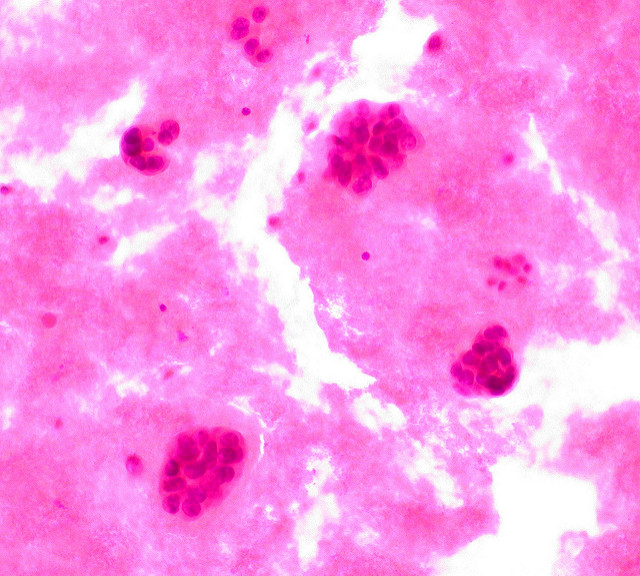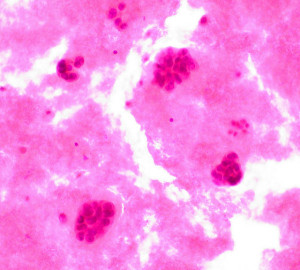By Dr. Karen Brothers
It’s October — time for what I believe is the best-known health awareness campaign on the planet: Breast Cancer Awareness Month. You’ve probably seen the pink ribbons and T-shirts around town and the special edition pink products online and on store shelves. You likely have multiple invitations to breast cancer-related events in your inbox. Your Facebook feed may be full of posts from friends urging you to donate to the cause or — even better — make an appointment for your mammogram because early detection saves lives!
According to the Centers for Disease Control and Prevention, breast cancer is the most common non-skin cancer in women, accounting for more than 230,000 new diagnoses and 40,000 deaths in 2013. Given those statistics, there is no doubt that awareness and screening exams are essential components of healthcare for women. I fully support any effort that encourages women to go to their doctors for breast exams and mammograms when they otherwise would not. So seek out the pink ribbons and T-shirts and wear them proudly. Buy the pink products and know that you are contributing to outreach and research efforts. (Just be sure to “ >>think before you pink .” Know how your money supports the cause and avoid buying products containing ingredients known to cause cancer.)
Decades of promoting awareness and screening have focused much-needed attention on diagnosing breast cancer in women (and men), but the real life-saving work — for providers, healthcare systems, researchers, and donors — begins after the diagnosis. Consider the following:
- Breast cancer is not a single disease but a group of several diseases with distinct characteristics that determine prognosis and guide treatment. Some breast cancers are more aggressive than others, and for those types, early detection is less likely to result in saved lives.
- African-American women are more likely than women of all other ethnic groups to have an aggressive type of breast cancer that lacks specific hormone receptors and does not benefit from newer pharmacological treatments that target those receptors.
- The accessibility and quality of mammography — the standard in diagnostic testing — vary based on geography and race. Urban mammography centers that serve predominately non-white populations are less likely to be located at cutting-edge academic or private institutions, offer digital mammography, or employ dedicated breast-imaging specialists. This directly impacts follow-up after abnormal results and the resulting care provided at those centers.
- Of all women, African-American women are most likely to die from breast cancer. Data collected from 1975 to 2004 shows increasing rates of breast cancer-related deaths for African-American women living in the South and Midwest.
- Women with low incomes have lower survival rates that women with higher incomes. The inability to afford health insurance, inflexible work schedules, and lack of reliable transportation are all factors affecting access to care.
- Insurance coverage does not guarantee high-quality care. While uninsured women are more likely to be diagnosed with more advanced disease and receive nonstandard treatment, non-white women with insurance continue to experience longer times between examination and diagnosis than their white counterparts.
- African-American women encounter more delays in treatment after diagnosis and more frequent misuse and underuse of treatment compared to white women. In addition, they are less likely than white women to undergo genetic counseling when they have a family history of breast or ovarian cancer. As a result, their family members do not receive the information necessary to fully assess their own breast cancer risk.
- Women of color are less likely to be included in the clinical trials that help scientists understand the biological and genetic differences between the different types of breast cancer and develop the best therapies to treat them.
Early detection is only part of the solution.
I have seen breast cancer up close. I have held the hands of women just diagnosed with breast cancer who worry about paying for their treatment and caring for their families. I have hugged women who just learned that they will have to undergo further treatment for the cancer they previously beat. I have consoled the loved ones of women living with cancer who struggle to find the right words to say and the right things to do. I have danced with women who have learned they are cancer-free. I have cried with family members who grieve the passing of their mothers, sisters, daughters, aunts, cousins, and friends. Early detection is only part of the solution.
I stand with my colleagues in healthcare, women living with breast cancer, and the families and friends of those women who have passed on to reduce the impact of breast cancer on our communities through prevention, adequate treatment, and continued research. I ask you to support us in focusing our efforts beyond early detection to create a system of care that prioritizes the impact of biology and quality of care on patient outcomes. We all want to save women’s lives, and we can all wear pink while doing it.
For more information, see
- Centers for Disease Control and Prevention, >>https://www.cdc.gov/cancer/breast/
- Breast Cancer Action, >>http://bcaction.org/site-content/uploads/2010/11/Disparities-and-Breast-Cancer.pdf ,
- Daly, B. and Olopade, O. I. (2015), A perfect storm: How tumor biology, genomics, and health care delivery patterns collide to create a racial survival disparity in breast cancer and proposed interventions for change. CA: A Cancer Journal for Clinicians, 65: 221–238. doi:10.3322/caac.21271


Thanks for what you do and for highlighting prevention, adequate care and research. I’m not clear on what you are asking us when you say
“I ask you to support us in focusing our efforts beyond early detection to create a system of care that prioritizes the impact of biology and quality of care on patient outcomes”.
What should we do?